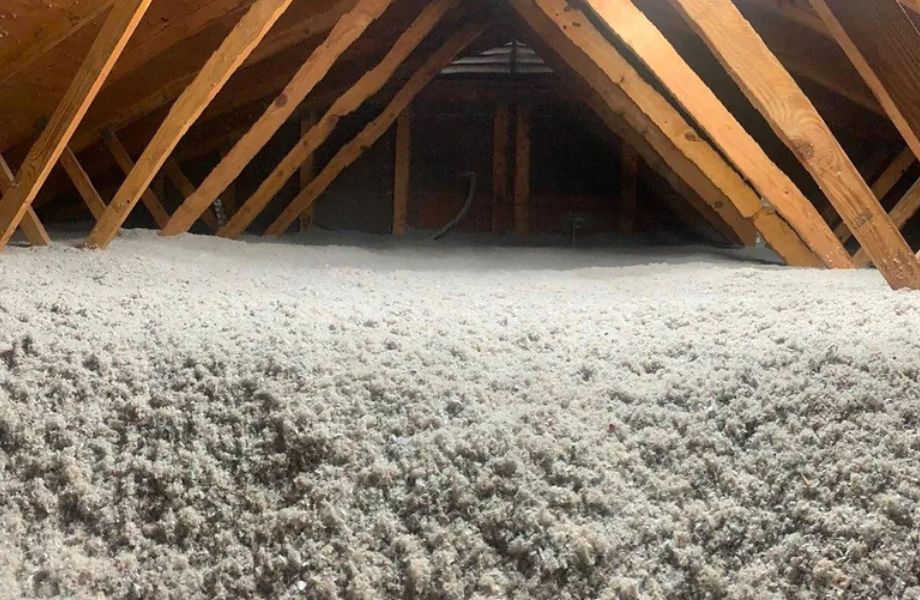Blow-in insulation is a popular and effective method for improving the energy efficiency and comfort of your home. It’s a versatile solution that can be used in attics, walls, and other hard-to-reach spaces, making it a go-to choice for both new constructions and retrofits. In this article, we’ll explore what blow-in insulation is, its benefits, and how it can be the key to a cozier, more energy-efficient home.
What is Blow-In Insulation?
Blow-in insulation, also known as loose-fill insulation, involves blowing small particles of insulation material into spaces within your home, such as attics or wall cavities. The materials used for blow-in insulation can vary, but the most common types include:
- Fiberglass: Made from recycled glass, fiberglass is lightweight and non-combustible. It’s a popular choice due to its affordability and effective thermal performance.
- Cellulose: Composed of recycled paper products treated with fire-retardant chemicals, cellulose is an eco-friendly option. It provides excellent thermal insulation and is particularly effective at reducing air leaks.
- Mineral Wool: Also known as rock wool or slag wool, mineral wool is made from natural rock or industrial waste. It’s highly resistant to fire, water, and pests, making it a durable and safe choice.
Benefits of Blow-In Insulation
- Improved Energy Efficiency Blow-in insulation helps to fill gaps and voids in your home’s structure, creating a thermal barrier that reduces heat loss in the winter and heat gain in the summer. This leads to lower energy bills and a more energy-efficient home.
- Enhanced Comfort By providing a consistent layer of insulation, blow-in insulation helps maintain even temperatures throughout your home. This reduces drafts and cold spots, creating a more comfortable living environment year-round.
- Quick and Easy Installation Blow-in insulation can be installed quickly and with minimal disruption to your home. It’s an excellent choice for retrofitting older homes, as it can be applied over existing insulation to boost its effectiveness.
- Versatility Blow-in insulation can be used in a variety of applications, including attics, walls, and floors. Its ability to conform to any space makes it ideal for insulating irregular or hard-to-reach areas.
- Soundproofing The dense layer of blow-in insulation also provides soundproofing benefits. It can reduce noise from outside and between rooms, contributing to a quieter home environment.
- Eco-Friendly Options Cellulose blow-in insulation, made from recycled materials, is an environmentally friendly choice. It not only reduces energy consumption but also repurposes waste products, contributing to a more sustainable home.
Applications of Blow-In Insulation
Blow-in insulation is suitable for various areas in your home:
- Attics: Blow-in insulation is often used in attics to prevent heat from escaping through the roof. It can be applied over existing insulation to enhance its effectiveness.
- Walls: It’s a great option for retrofitting walls, as it can be injected into wall cavities without the need for major renovations.
- Floors: Insulating floors with blow-in insulation can help reduce heat loss, especially in homes with crawl spaces or basements.
Choosing the Right Blow-In Insulation
When selecting blow-in insulation, consider the following factors:
- Material: Depending on your priorities—whether it’s cost, fire resistance, or environmental impact—you can choose between fiberglass, cellulose, or mineral wool.
- R-Value: The R-value measures the insulation’s ability to resist heat flow. Choose a material with an appropriate R-value for your climate to ensure optimal energy efficiency.
- Installation Area: The location of the insulation will influence the material choice. For example, cellulose might be preferred for walls, while fiberglass could be more suitable for attics.
Blow-in insulation is an effective and versatile solution for enhancing your home’s energy efficiency and comfort. Whether you’re looking to insulate your attic, walls, or floors, this type of insulation offers a quick, easy, and eco-friendly way to improve your living space. By investing in blow-in insulation, you’re not just saving on energy costs—you’re also creating a more comfortable, quiet, and environmentally conscious home.
Consider consulting with a professional to determine the best type of blow-in insulation for your specific needs and start enjoying the benefits of a well-insulated home today.



